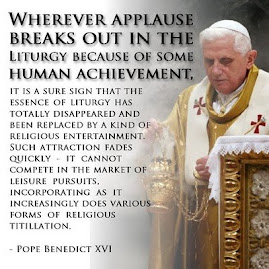Msgr. Wadsworth Explains the Translation Process
FRONT ROYAL, Virginia, SEPT. 26, 2011 (Zenit.org).- The executive director of the International Commission on English in the Liturgy (ICEL) visited Christendom College last week to explain the steps involved in producing the new translation of the missal of the liturgy in English.
Theologian Msgr. Andrew Wadsworth, a priest of the Archdiocese of Westminster, England, readily acknowledged that the new translation is "more formal."
He explained that the use of formal English words reflected the quality and the characteristics of the original Latin text, and it also avoided regional differences that are more often found in colloquial phrasings.
"The difference that we have in our language, when we use it in an everyday way, does not exist to the same level when we move everything up a notch," the priest said. "When we move everything to a more formal register of the use of English, then we have a language that is common across regional and national boundaries."
Msgr. Wadsworth suggested that the current translation is "a bit flat": "The ideas are there, but they've sort of been squashed. In the new translation, they are re-inflated. They have something of the natural balance that is evident in the Latin.
"The phrases balance each other perfectly, the ideas are well presented, and you get a greater sense of what the prayer is about."
In his talk titled "The Making of the Missal," the commission director also explained the translation process, which he said was undertaken with "great care" and with the involvement of the bishops at each step.
He said that a base translator, who is accomplished in both linguistics and theology, initially translates each text. That translation is then evaluated by a team of four bishops, who present the text to the 11 bishops who serve ICEL. The text then goes to the 11 conferences that those bishops represent.
There, comments and recommendations are made, after which it is sent back to
ICEL. The commission makes adjustments to the translation and then it goes back to the 11 conferences for review. With a two-thirds majority vote, it is approved and sent to the Holy See.
Gregorian chant
Msgr. Wadsworth, an accomplished musician and leader of a choir that performs internationally, also noted that the new Missal contains more music that any other Missal in the history of the Church.
"The music is Gregorian chant -- with which I believe you are familiar," he said with a smile. "The Latin and the English sometimes appear side by side, which is a powerful way to reinforce that the singing of chant in Latin is perfectly alright in an English celebration of the Mass."
He went on to encourage students in their study of Latin, saying that the language is the "matrix" of much of western civilization and even more so of the Church -- particularly with sacred liturgy.
"The number of men and women who have the necessary command of the language is pitifully small at the present. It has dwindled," he said. "You are part of the new wave that's going to produce a new generation of scholars that will have not only these skills, but the sensibility to understand what the liturgy is about because you've been formed with Catholic theology. It is not sufficient to be a linguist. You have to be a linguist who understands the theology of the liturgy and who understands the truest purpose of the liturgy."
Concluding, Msgr. Wadsworth said that the purpose of the production of the English edition of the Missal -- and the guiding purpose in all of ICEL's activity -- is to create a dignified celebration of the sacred liturgy enabling all people to come to a greater experience of the saving mysteries that are celebrated.
The new translation of the Mass will be implemented in the United States on Nov. 27.
--- --- ---
On the Net:
To download the talk: http://christendom.edu/news/itunesu.php
Daily Rome Shot 1485
16 hours ago


No comments:
Post a Comment